Berlin's Museum Island
A short guide to the museums (etc) at the heart of Berlin
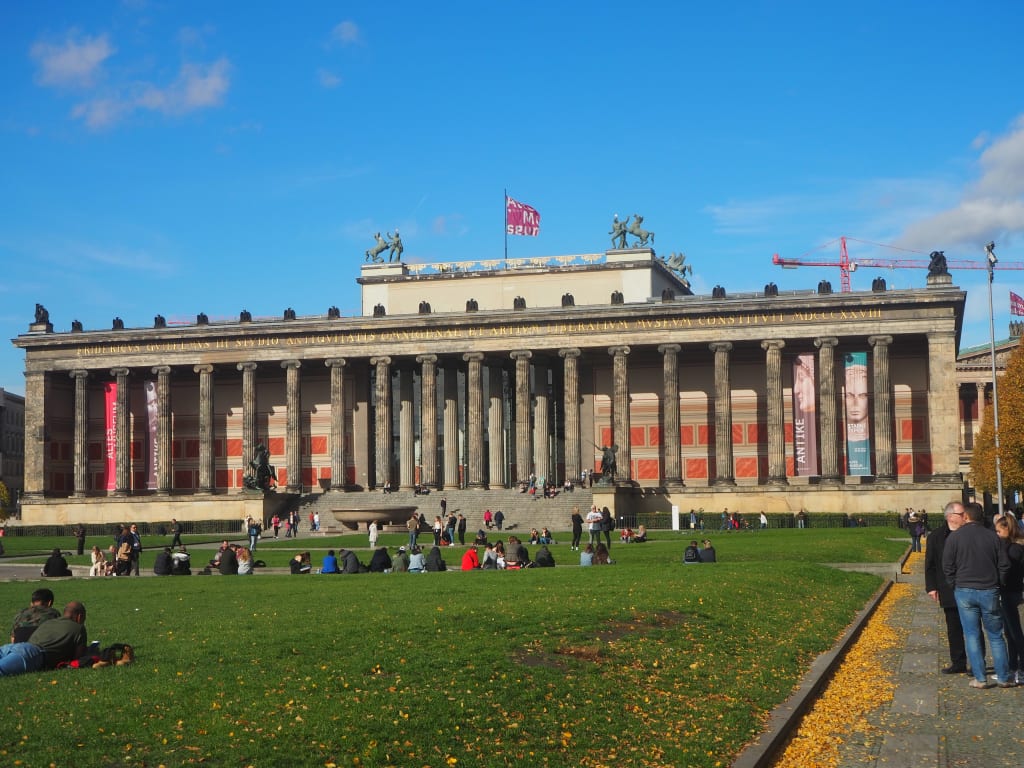
Berlin abounds with galleries and museums of all kinds, but five of the best – and oldest – can be found in close proximity to each other on an island in the heart of the city.
The island is formed by the narrow River Spree and a canal that by-passes a short stretch of the river. This was where the city of Berlin began back in the early 13th century although no trace of the early settlement remains. The island was transformed in the 15th century when the palace of the Electors of Brandenburg was built here. This building has also disappeared, but several impressive buildings from Imperial times remain, including the Berliner Dom (Cathedral) and the museums that give the island its name.
Berliner Dom
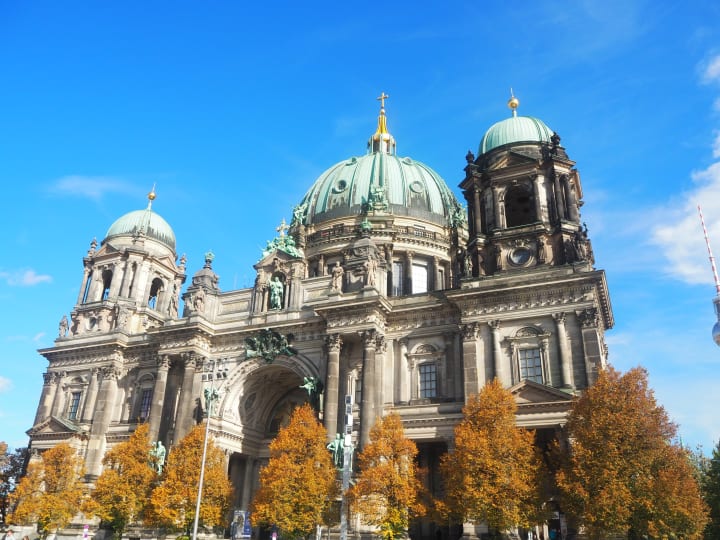
This was built between 1894 and 1905 on the site of an earlier cathedral built in the mid-18th century. It suffered severe bomb damage during World War Two but has been restored in a simplified form of the original neo-Baroque design. A prominent feature of the Cathedral is the copper dome that rises to 321 feet (98 metres) and at the base of which is a gallery that offers superb views over Museum Island and the rest of Central Berlin.
The interior is richly decorated and includes mosaics of the Four Evangelists on the ceilings of the smaller niches. The pulpit is an elaborately carved neo-Baroque structure and the organ, built by William Sauer, contains around 7,200 pipes.
The crypt, which survives from the previous structure, contains 100 richly decorated sarcophagi of members of the Imperial Hohenzollern family.
Bode Museum
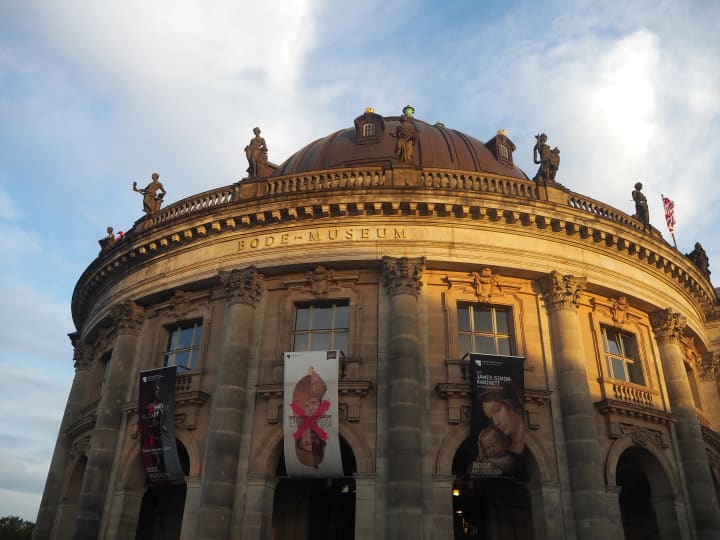
The Bode Museum was opened in 1904. This museum had to be built to fit the space available at the northern end of the island, which is a rough triangle cut off from the rest by a railway line that runs across the island.
The museum is named after Wilhelm von Bode, who was Director of the Berlin state museums at the time the museum opened, but before 1956 it was known as the Kaiser Friedrich Museum. The collection is somewhat mixed, including sculptures, Byzantine art, and an outstanding coin collection that includes items from ancient Athens and Rome.
Altes Museum
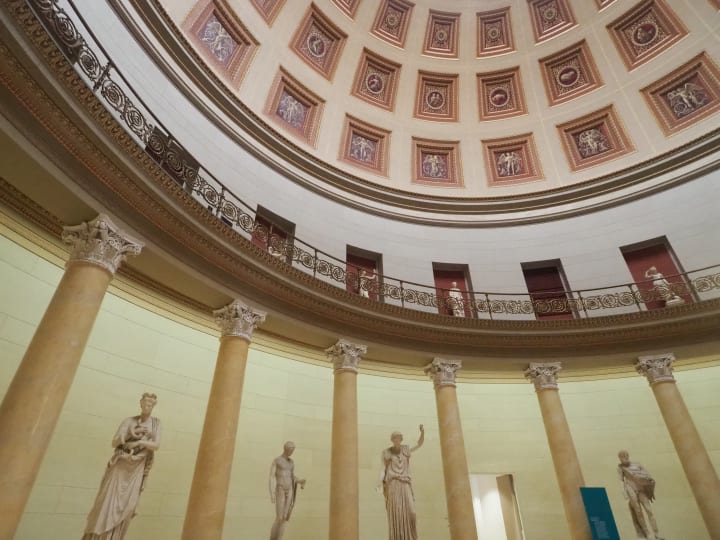
This was opened in 1830 in a magnificent neo-classical building that was originally built to house the Prussian monarch’s collection of paintings and antiquities. It now stages permanent exhibitions of the art and culture of Ancient Greece downstairs and Etruscan and Roman art upstairs.
The facade of the Altes Museum, which faces the open space known as the Lustgarten, features a portico that stretches for 285 feet (87 metres) and is adorned with 18 Ionic columns.
The central rotunda is decorated with sculptures and circled by a colonnade. It was designed to resemble the Pantheon in Rome.
Outside the front of the museum is a massive granite bowl that weighs 70 tons and was the largest in the world, at 23 feet (7 metres) in diameter when it was placed here in 1828. The original plan was for it to rest inside the Museum’s rotunda, but it proved to be impossible to get it inside!
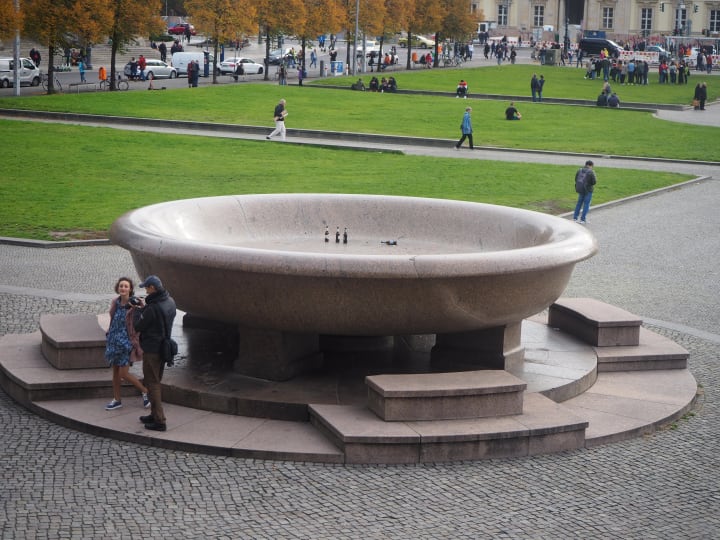
Neues Museum
When the collections of the Altes Museum grew too large to be accommodated, a new building was commissioned which opened in 1855. The Neues Museum was another victim of wartime bomb damage and did not reopen until 2009.
This is the home of Berlin’s major collection of Egyptian art, with the world-famous bust of Queen Nefertiti as the star exhibit. Also to be seen are the Collection of Classical Antiquities and the Museum for Pre- and Early History. The latter includes a collection from the ancient city of Troy – brought to Berlin by Heinrich Schliemann – and gold jewellery that Schliemann mistakenly believed to be part of the “Treasure of Priam”.
Pergamon Museum
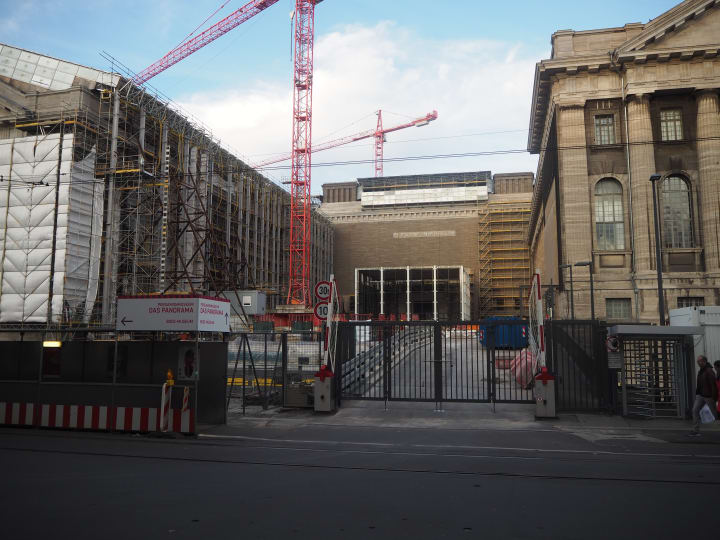
Opened in 1930, this is unlike anything one is likely to see anywhere else in the world, and it owes its existence to the activities of German archaeologists who worked in the Middle East during the late 19th and early 20th centuries and sometimes acted in ways that many people today would question. That said, the results of their efforts are well worth seeing.
The Pergamon Museum is currently undergoing a major redevelopment, which means that the main reason for its naming is not available to view. This is the Pergamon Altar, which was discovered in the ancient city of Pergamon in western Turkey and reconstructed in Berlin at around the turn of the 20th century. The Pergamon Museum was built specifically to display the Altar and associated friezes and other objects from the site.
The Museum was expanded to allow for the display of other huge monuments, and these are what can be seen at present in the South Wing of the Museum while the other parts remain closed.
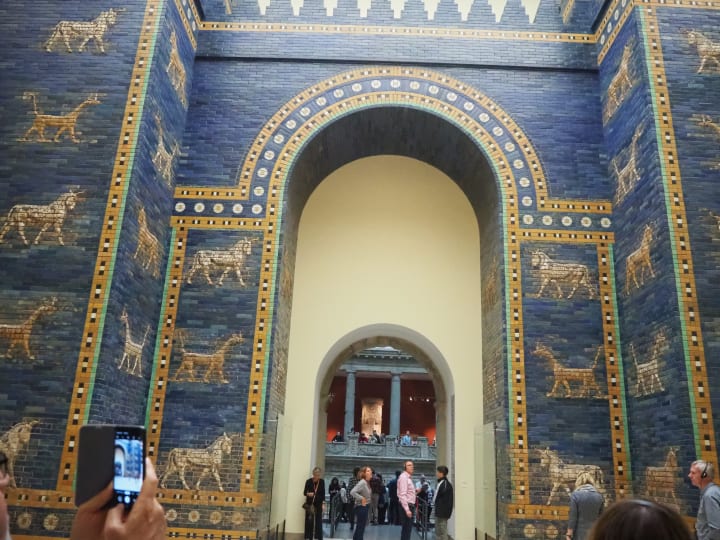
You can therefore walk down the Processional Way of the city of Babylon and then, like King Nebuchadnezzar, walk through the Ishtar Gate. Both of these are adorned with thousands of brick-shaped glazed blue tiles that are decorated with images of real and mythical animals. These were discovered in fragments and shipped to Berlin in more than 500 huge crates, to be re-assembled according to documentary evidence from the time of Nebuchadnezzar.
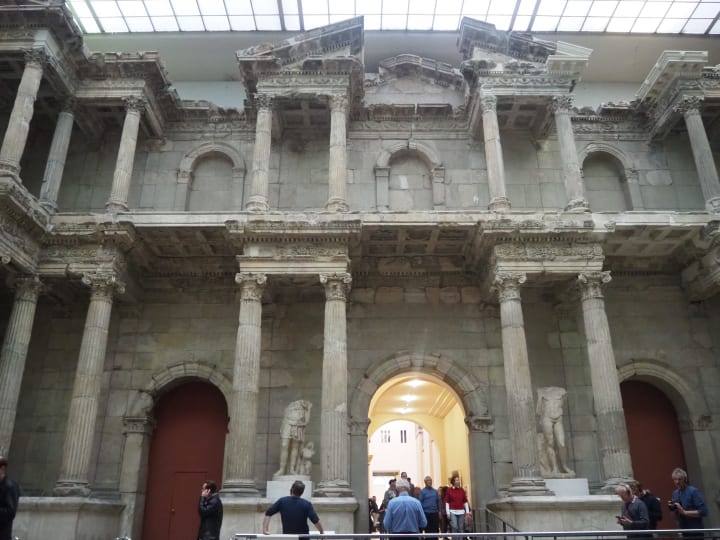
When you go through the Ashtar Gate you find that you have also walked through the Market Gate from the ancient Greek colonial city of Miletus. This is a massive two-storey structure that stands nearly 95 feet (29 metres) across and 55 feet (17 metres) high. It dates from the 2nd century AD and stood as a link between two public areas in the town until it was felled by an earthquake in the 10th century.
The reconstruction in Berlin contains around 60% of the original marble blocks, despite further damage having been caused during World War Two.
The Miletus Hall also contains a superb mosaic floor from a house in Miletus, a round tomb from north of Rome, and a partial reconstruction of a porticoed hall from Pergamon, this being one of the few items currently on display in the Pergamon Museum that actually came from that city.
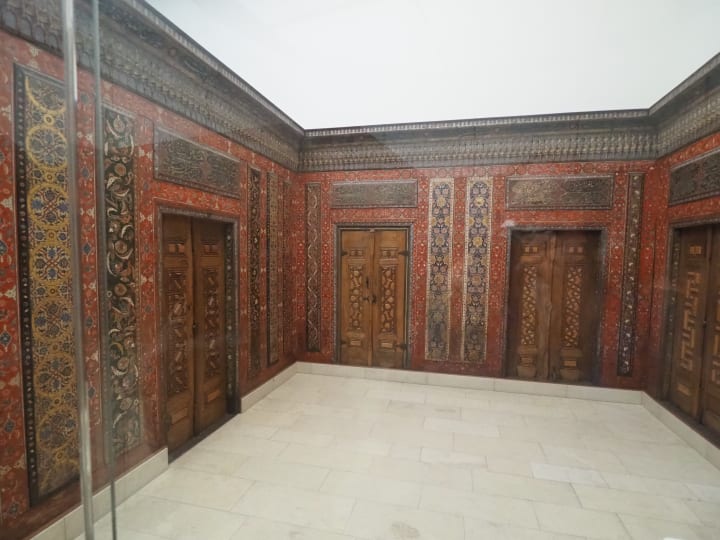
Go upstairs and you will find exhibits relating to Islamic Art. These include the remarkable Aleppo Room, consisting of painted wall panels from around 1600 that once adorned a merchant’s house in the Syrian city of Aleppo. It is probably just as well that the panels are now in Berlin, seeing that the building, which had survived for hundreds of years, fell victim to bombing in the recent conflict in that region.
Alte Nationalgalerie
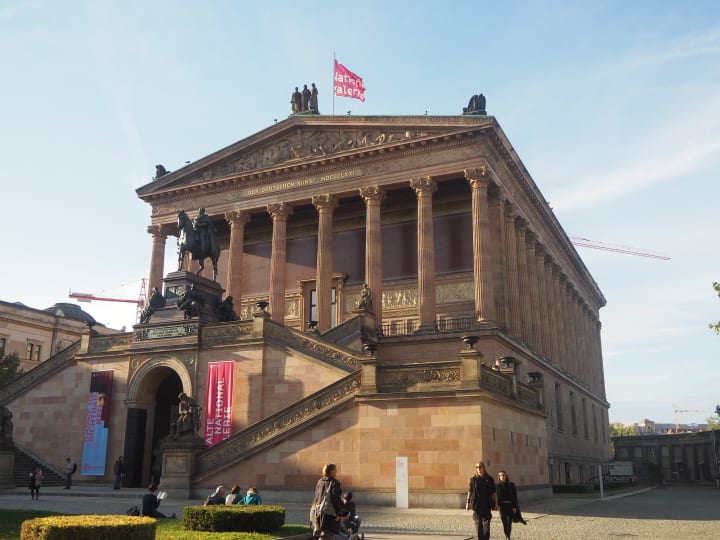
The Alte Nationalgalerie opened in 1876. The building is a copy of a Greek temple, reached by a double staircase. The image of Germania, the patroness of German art, forms part of the tympanum above the entrance to the gallery.
The national art collection has now vastly exceeded the capacity of the Alte Nationalgalerie and it is now also spread around five other buildings in Berlin. The original building displays works by German masters such as Caspar David Friedrich, but there are also paintings by French Impressionists and even a few pieces by John Constable, although these are not easy to find.
About the Creator
John Welford
I am a retired librarian, having spent most of my career in academic and industrial libraries.
I write on a number of subjects and also write stories as a member of the "Hinckley Scribblers".






Comments
There are no comments for this story
Be the first to respond and start the conversation.